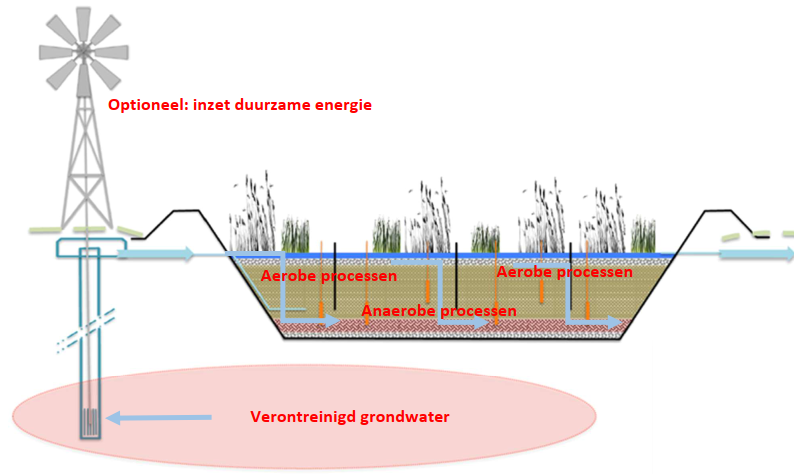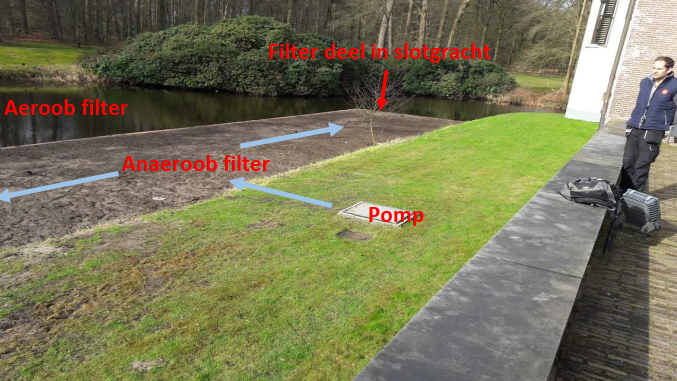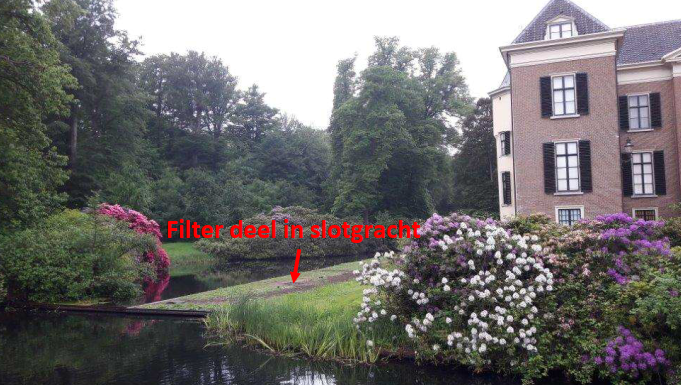A constructed wetland?
First some explanation on what a constructed wetland is. In nature, a ‘wetland’ is the area where the transition from the land to the water is located. These can be, for example, mangroves or swamps. The special quality of these areas is the quick alternation of biological conditions. In some places there is a lot of water (and little oxygen), while in higher, dry areas there is oxygen. This alternation in biological conditions also results in a wide range of biological degradation processes.
This principle is the bases for a constructed wetland for the biological treatment of chemical compounds. A constructed wetland is a further development of a helophyte filter. This type of filter has been used for decades to treat domestic water flows. The focus of the degradation with these filters is on macro chemistry.
The principle of a constructed wetland is based on the alternation of aerobic and anaerobic conditions in the system. The chemical compounds are so exposed to various degradation processes, in the end resulting in a transformation of the chemical compounds to non-harmful components.
There are differences in biologically active zones in a constructed wetland. The root zones of the plants accommodate a wide variety of biology and biological processes. Both aerobic and anaerobic conditions occur here. Anaerobic conditions dominate in the deep water of the filter, the influence of the roots are negligible here. The surface parts of the wetland are dominated by aerobic conditions in the water. These variations are used when designing a constructed wetland. A constructed wetland can be applied to a range of water contaminants such as chlorinated hydrocarbons (VOCl), aromatics, mineral oil, heavy metals and PAH.

What is the treatment efficiency of a constructed wetland? That is quite high, comparable to conventional water treatment techniques. The efficiency can be influenced by the design of a constructed wetland. The dimensions, number of compartments, aerobic alternation with aerobic and planting density are adjustable and matched with the water flow to be treated. For a constructed wetland, data about the type of contamination and the flow to be treated are therefore critical for the design. Is the treatment efficiency determined by the season? A logical question because the growth of plants and root systems depend on the season. However, current projects show that there is always some degree of biological activity. This is logical because in the deep parts of a wetland the biological processes continues almost independently of the season.
After completion, a constructed wetland is an almost completely independently operating biological system. This results in very low running costs. A constructed wetland can also be fully integrated in the existing landscape of a site. As an example: for a location in Doorn (The Netherlands) it has proved possible to realize a constructed wetland in the castle moat of Huis Doorn, a listed national monument.
The application of constructed wetlands in various projects has led to many practical experiences but also ideas on further possibilities. For example, it is possible for almost every location to make the constructed wetland energy neutral using solar or wind energy. Also, the outflow water from the wetland is rich in degrading bacteria. This water can be infiltrated into the contaminated soil allowing for in-situ soil biodegradation.


